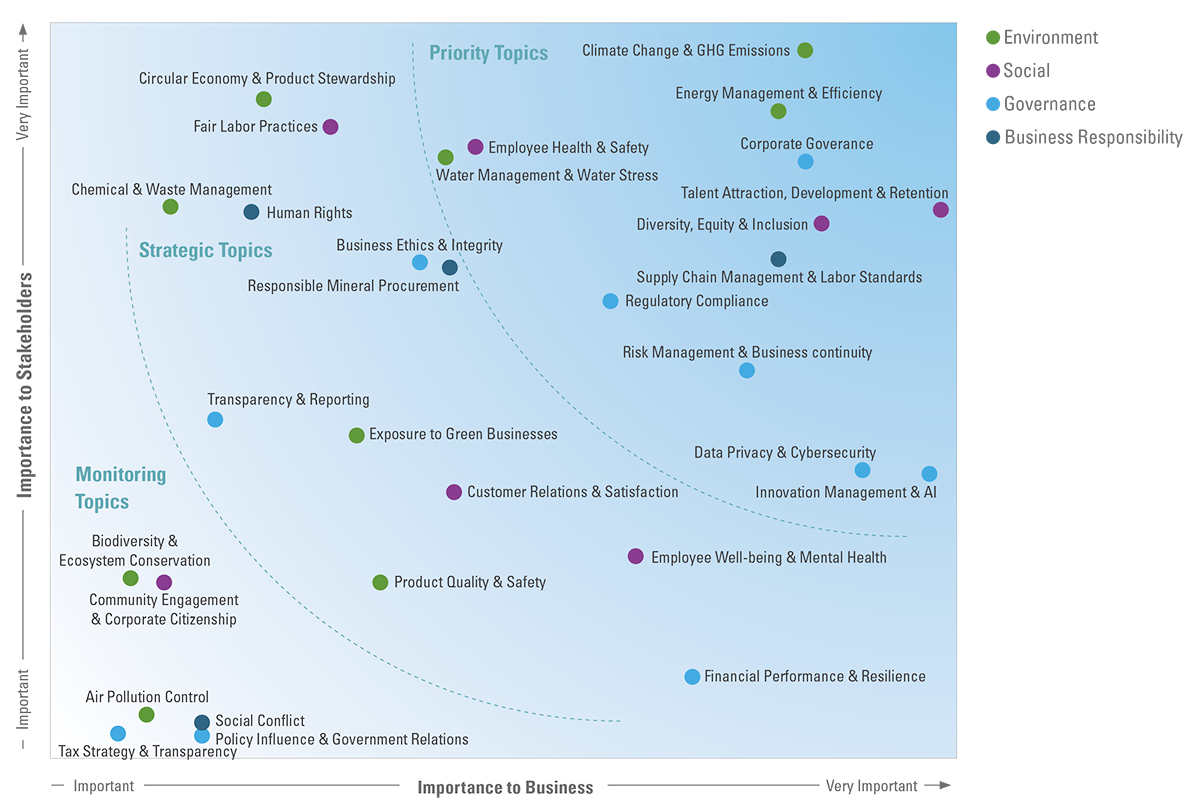Sustainability Approach
Sustainability Strategy and Commitments | Materiality | Sustainability Targets | ESG Ratings, Scores, and Indices
Materiality
Materiality Analysis
To ensure that we are aligned with the ever-changing priorities of our stakeholders, we renewed our materiality analysis in 2025. This comprehensive materiality analysis serves as the foundation of Sustainability Strategy 2.0.
To help us identify and prioritize ESG issues of mutual importance, we have engaged with a diverse group of Renesas leaders, including our CEO, CFO, CHRO, and Head of Operations. These stakeholders were selected after consideration of their responsibility and proximity to sustainability issues. In addition to our management team, surveys with ELT members and interviews were also conducted with a selection of Renesas’ key investors and customers. Based on the input from our internal and external stakeholders, we formulated mid and long-term strategies to address our key material issues and minimize ESG risks.
This materiality analysis was conducted with the following aims:
- Strengthen accountability and improve transparency all stakeholders, including customers, suppliers, and employees
- Align with Renesas’ business strategy and clarify our mid and long-term ESG goals and targets
- Ensure consistency with global sustainability standards and best practices
Our 2025 materiality map defines material topics in three layers: Priority Topics (high business and stakeholder impact), Strategic Topics (core to operations and reputation), and Monitoring Topics (monitor for future impact).

Priority Topics: High focus and importance to both stakeholders and business. These topics have a direct and immediate impact on business success and stakeholder trust, including customers and investors.
Strategic Topics: Core importance to business operations and reputation. Failure to manage these effectively (e.g., data privacy, product quality) could lead to significant business or reputational damage. These topics also have the potential to become high-priority issues in the near future.
Monitoring Topics: Lower current relevance but important to track for potential long-term impact. These topics may rise in priority based on external factors or business changes.